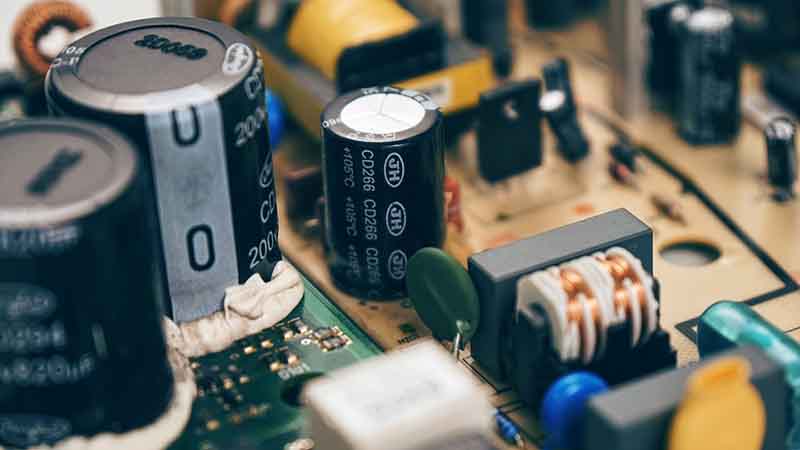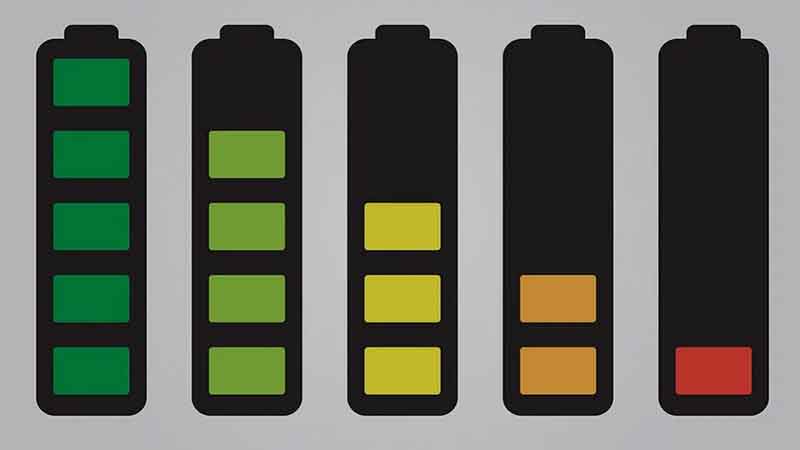If you look at the circuit board of any electronic device, you will find that it has an electronic component called a capacitor. The main function of a capacitor is to store electricity and release electricity to the circuits on the board as needed.
A capacitor uses two metal plates to store an electric charge. These metal plates are called electrodes. They can maintain an electric field between themselves to store electricity as energy for the electronic components of the device. Whenever a component requires an electric charge, the capacitor delivers the charge as needed.
A supercapacitor is different than a regular capacitor because it has more energy density. It also has a higher capacity for storing electrical energy in comparison to a standard capacitor. A supercapacitor cannot store as much power as a battery, but it can store more power than a capacitor.
The term “supercapacitor” was first used in the 1990s by a Japanese technology company named NEC. It was the first company to create a supercapacitor device. The technical name of a supercapacitor is EDLC, which stands for “Electrochemical Double Layer Capacitor.”
Since it uses two layers of medium material between its electrodes, the supercapacitor was called a “double layer” capacitor. But that whole name was harder to remember, so the name “supercapacitor” became used instead. That name continues to be used to this very day.
Supercapacitor vs Capacitor
Below are the main differences between a supercapacitor and a standard capacitor.
1) Materials
Standard capacitors are made of dielectric materials, such as polymer films, aluminium oxide or ceramic. These materials are what separate each metal plate (or electrode) from one another. One capacitor won’t use all three dielectric materials together, but rather only one of them.
Supercapacitors use different dielectric material. Activated carbon is what forms the barrier between the two electrodes of a supercapacitor.
2) Charge Time
The best thing about supercapacitors is they can deliver the fastest energy charge and discharge times. Standard capacitors take about 10 seconds to charge and discharge, but supercapacitors can usually perform these actions faster. Supercapacitors do not risk damaging the components of the circuit either.
3) Energy Store
Supercapacitors store more energy and have higher energy density than capacitors. The typical supercapacitor can store anywhere between 10 times and 100 times more power per unit volume than a normal capacitor.
That is why so many mobile electronic and mechanical devices use supercapacitors, including cars, cell phones, buses, printers and so on. Since people don’t want to spend so much time charging their electronic devices, they depend on supercapacitors to discharge energy for longer periods of time. That way, the charging time can be reduced.
4) Cost
Supercapacitors cost a lot more money than normal capacitors. It is understandable, though, because you are paying for better results. Supercapacitors can store more energy and last for a longer time. You won’t have to replace supercapacitors as frequently as standard capacitors either.
5) Power Consumption
One advantage of capacitors over supercapacitors is they don’t draw on power as much. Supercapacitors handle more power, which means you’ll need to supply more energy to the electronics and devices that use supercapacitors.
If you care about energy conservation and saving money on your power bill, then you’ll want to use devices with capacitors instead of supercapacitors.
Read also: The Difference Between Battery VS Supercapacitor
Conclusion
It is possible for electronic devices to have capacitors, supercapacitors and batteries that all work together. Supercapacitors offer high energy density and fast charging and discharging times. However, the capacitors are necessary to regulate the charging and to stabilize the voltage, especially in the battery and electronic devices found in cars.



